Shootout at the MO Corral: A Bout With the Scout + Video

When Indian unveiled the Scout at Sturgis last month, it sent ripples through the motorcycle world. How would it compare with other cruisers in its class? What exactly were the other cruisers in its class? Obviously, Indian is hoping to improve its bona fides by taking on that other American brand’s most ubiquitous V-Twin in its displacement class, but what others? So, the lists began.
That’s pretty much how the conversation went during our weekly production meeting in the conference room high atop the gleaming MO Tower overlooking the smog-covered sprawl of Southern California. By the time we finished our conversation, we’d listed a total of seven motorcycles we thought the Scout should face off against to test its mettle in the great tradition of settling disputes in the Old West, the shootout.
The selection process was anything but simple.
First, we went with the obvious V-Twins in a similar displacement range, which got us the Harley-Davidson Sportster 1200C, the Honda Stateline and the Star V Star 1300 in addition to the Scout. Then we looked at the liquid-cooled 60° V-Twin which brought the Harley-Davidson Night Rod to the party – after a particularly heated debate over the $5,550 price difference. Next came the Victory Gunner which, despite displacing 1,731cc, we felt belonged in the test since Victory has positioned the Gunner as an entry-level, premium Big Twin. The link here is the premium features that we’ll get to later in the shootout. Finally, the Moto Guzzi California 1400 is included because we felt that it would provide a good handling comparison to the Scout despite the 133cc displacement advantage and $4,491 price difference.
Which V-Twin Will Win?
The engine format coveted by cruiser riders has long been settled in favor of the V-Twin, but this gathering points out a change afoot in the form of liquid-cooling. Only three of our seven contestants (the Sportster, Guzzi, and Victory) are air- or air/oil-cooled. However, perhaps the biggest sign of changes to come is the Scout’s lack of even a nod towards air-cooled styling, as exhibited on the Stateline and V Star in the form of decorative cooling fins and a hidden radiator. The Indian is unabashedly liquid-cooled, so get over it, all you traditionalists.
When it comes down to the other factor in the cylinder layout, you’ll probably be surprised by the results. While the degree of the Vee covers the spectrum from 45° to 50° to 52° to 60° to 90° (in a transverse arrangement, no less), the victor here is the 60° Vee. While the 45° Vee has the historical connection to Harley engines (plus its associated domination in unit sales) and the 90° Vee has primary balance in its favor, the 60° V seems to be the best compromise when it comes keeping the engine height (and its CG) down while still having the fore-to-aft space to locate its bulk without making the chassis overly long – unless a long wheelbase is desired. The Guzzi simply marches to its own beat, hanging the cylinders off the sides of the bike for everyone to see.
So, how did the seven engines sort themselves out? When it comes to raw power, the Night Rod was the clear winner with a peak horsepower of 107.6, while the Scout came in a strong second with 83.0 hp. In the torque department, the Gunner and the California ran up the biggest numbers, with 93.2 lb-ft and 73.6 lb-ft, respectively. This shouldn’t come as a surprise since torque output is directly related to displacement.
Still, the makeup of a strong engine is more than just the peak numbers. The riders’ subjective experiences are what determine the most usable engine in any given group of bikes.
Honda Stateline
+ Highs
- Great looks in profile
- Honda reliability
- Longest bike in test
– Sighs
- Weakest engine
- Too much plastic chrome
- Longest bike in test
Bringing a Knife to a Gunfight
The Honda Stateline trailed the others in the horsepower department (55.6 hp) but moved up to mid-pack in torque (72.2 lb-ft). Deep Loam Guest Rider, Scott Rousseau, succinctly described the Stateline’s character: “Honda’s Shadow 1300 engine is just about the most venerable powertrain here other than the Sportster. It makes a ton of torque down low but runs out of breath quickly, forcing the rider to short-shift it. Honda’s reliability is without question, but the Stateline’s engine delivers ho-hum performance compared to the other bikes in this group.” The good news is that the transmission is typically Honda in its smoothness and snickability, making the frequent trips to the shifter more of a pleasure than a chore. Other good news centered around the fuel metering, which was spot on throughout our rides.
Still, the testers’ opinions were pretty much unanimous in their disappointment, leaving the Stateline’s engine performance tied for last with the Sportster. Distilling the Stateline’s performance to soundbite size, That’s-Not-a-Motorcycle Editor Duke summed up our feelings the best, saying the Stateline, “despite a bad-ass profile, is a tame cruiser – born to be mild.”
Harley-Davidson Sportster 1200C
+ Highs
- The reason this class of motorcycles exists
- Surprisingly competent handling
- Best paint of the group
– Sighs
- Insufficient rear shock travel
- ABS is a $795 option
- Is a nice paint job really the only way H-D can spruce up a Sportster these days?
If it weren’t for the Sportster, this class of motorcycle wouldn’t exist, which makes the Sporty the very definition of Old School – before you even consider the liquid-cooled bikes in this shootout. Still, the engine’s 1202cc displacement (that’s 73.4 cu. in. for those only familiar with ‘Murican units of measure) slots it in next to last for the amount of atmosphere consumed with each intake stroke. Harley’s engineers can take the credit for massaging the last bit of power out of the vintage pushrod design, though.
Rousseau credits the “responsive fuel-injection” for the Sporty’s “fighting above its weight” in this contest. If you’re upset about the 61.6 hp and 67.6 lb-ft numbers, you’re looking at the wrong reasons to ride the 1200C. “While pushrods and air-cooling don’t enthrall the performance side of me, there’s no doubting the Sportster’s visceral appeal,” pointed out Duke. Still, Curmudgeon Editor, John Burns, flatly stated a sentiment harbored by most of us when it came to the Sportster’s engine performance, ”I want more and smoother power if I can get it for the same money.”
Star V Star 1300
+ Highs
- Best suspension of the bunch
- Smooth engine with just the right amount of vibration
- Perhaps the most versatile
– Sighs
- Bland
- Questionable graphics
- Needs an update
Referred to more than once on our ride as the Rodney Dangerfield of the gathering, the V Star 1300 did everything well but somehow managed not to connect on a personal level. Closet Cruiser Editor, Troy Siahaan, brilliantly encapsulated the Star’s issue: “The engine, like the Honda’s, is refined, smooth, and powerful enough.” Enough – six letters that, in some ways, hurt more than criticisms of mechanical shortcomings directed at other bikes in this test.
The Star’s competence is there, but the personality is lacking: Says Duke, ”Strong, seamless power and an excellent transmission.” Rousseau agrees, “The V Star 1300’s liquid-cooled four-valve engine delivers solid V-Twin power, but it lacks the excitement of some of the other machines in our group;” Burns muses, ”It might be the most functional bike here, but somehow it’s one of the most emotionless ones;” and Non-Touring Bike Editor Tom Roderick pronounces, “I’m hard-pressed to find any glaring faults with the Star, but I also can’t find any reasons, or desire, to purchase this motorcycle.”
So, even though our riders ranked the Star’s clutch and transmission second overall, with compliments about how the “EFI is just about perfect, and it possesses a little more rumble and shake than the Guzzi or the Honda when rolling along in high gear,” as Rousseau points out, the engine’s ranking comes down to personality. In fact, the only concrete criticism of the Star’s engine was that it could use a sixth gear for more relaxed highway riding. Its 67.3 hp and 72.4 lb-ft dyno readings place the 1304cc engine solidly mid-pack.
Moto Guzzi California 1400
+ Highs
- Rides like a sport-touring bike
- Powerful, unique engine
- Power modes and traction control
– Sighs
- Heavy
- Expensive
- Does it belong in this class of cruiser?
The California Shuffle
The Moto Guzzi’s engine ranked a surprising fourth. Prior to the ride, we’d questioned including the California in the shootout because of its higher displacement and price tag when compared to most of the others. Every rider included one fact in their notes: the Guzzi’s 90° transverse V-Twin did the stop light jump ’n jive even better than the Sportster, but once the bike was rolling, the engine was otherworldly calm. Duke noted, “After experiencing its slo-mo paint-shaker-like oscillations at idle, the Guzzi’s oddball V-Twin Is almost miraculously smooth once in motion.” However, the slow-revving Goose also packed in another surprise, which was, according to Roderick, ”The first thing you have to adjust to when riding the Guzzi is the engine’s ability to smash into the rev limiter quicker than the ordinary V-Twin.”
The California 1400 also included some high-tech features absent from all the other bikes. Ride-by-wire throttle made it possible for Guzzi to include cruise control and three power modes. “Veloce” was the sport mode but made the transitions from off- to on-throttle too abrupt for most of our testers. Since the “Turismo” (or touring) mode only changed the power delivery and not the peak output, this became the default setting for us. We left the inclement weather “Pioggia” mode for the hour or so we were trudging through waves of rain. Although having traction control is cool, the amount of variability might be overkill for a cruiser.
Just 0.2 hp from second in the horsepower standings and ending in a solid second place in torque, the Guzzi puts out 82.8 hp and 73.6 lb-ft of torque. “Being a 1400cc V-Twin, air-cooled, it shouldn’t have the kind of power it has, but holy cow it’s fast,” gushed Troy. While Rousseau found another reason to love the Goose’s engine: ”Smooth as it is, the Guzzi delivers an ear-pleasing, hot-rod exhaust note when you romp on the throttle. Molto bene!” He also reminded us that things haven’t always been that mechanically smooth in the not-so-distant past, pointing out the 1400’s “transmission is nowhere near the crashbox that the older California’s was.”
Victory Gunner
+ Highs
- Romping engine
- Lowest seat height
- Reasonable price for a Big Twin
– Sighs
- Harsh rear suspension
- Extremely noisy shifts
- Limited lean angle
Despite having, at 1731cc, the largest displacement here (by 351cc over the Guzzi) and squashing the others by 17.6 lb-ft of torque with a 93.2 lb-ft peak, the Gunner’s engine could only garner third place in the shootout. This is less a criticism of the Gunner’s powerplant and more a statement of how strong the competition is with this group of cruisers. Duke points out, “The Freedom 106 motor churns out torque like nothing else in this comparison, giving the effortless thrust we’ve come to know and love from big-inch V-Twins.” Rousseau agrees, ”You’d have to look far and wide to find a better-sounding exhaust note than the Gunner’s, and its bite is as strong as its bark, with a big gush of torque available the instant you roll on the gas. It’s not as athletic as the Scout or Night Rod engines, but the Gunner can pretty much polish off anything else in this group.”
However, it’s not all rainbows and unicorns for the Gunner’s brawny engine. A big dose of reality is injected in the form of, as Roderick put it, an “unforgivingly clunky transmission.” Rousseau’s feelings about the tranny point to the heart of Gunner’s problem and reveal that, perhaps, he needs to enter anger management classes: ”As well-sorted as its internal ratios are, the Gunner’s shifting action flat pisses me off. It’s precise enough, but it’s notchy and loud when you go from gear to gear. The knock is so loud that I could hear whomever was in front of me on the Victory shifting even when I could no longer hear the sound of its engine. Crash! Bang! Gag.”
Burns, taking on the unusual role of diplomat, points out that the Freedom 106 is “a good motor, but we want more after 10 years. Victory needs to put a little work in to keep the relationship fresh, but I guess they [parent company Polaris] have the excuse they’ve been investing in Indian. They get a bye this time, but not next year.”
Harley-Davidson Night Rod
+ Highs
- Engine by Porsche
- Best power of the bunch
- A Harley cruiser with a slipper clutch
– Sighs
- Riding position by De Sade
- Would be faster if not so heavy
- Wonky handling due to wide rear tire
Hand-to-Hand Combat
Most everything the Night Rod has going for it resides in its engine compartment. A Porsche-designed, 60° liquid-cooled V-Twin from Harley-Davidson doesn’t sound so odd in 2014, but set the way-back machine 13 years ago for a quick reminder of what a bold move this motorcycle was for the Motor Company. Today, despite possessing the third lowest displacement number of 1247cc (76.1 cu. in.), the Night Rod stomped the competition with 107.6 peak hp – that’s 24.6 hp more than second place. Although the Night Rod’s 71.5 lb-ft of torque places it sixth, any time the throttle is rolled on, the bike leaps forward, getting stronger as the tach needle sweeps towards redline. “It doesn’t harness as much grunt down low as the Indian does,” notes Rousseau, ”but the Harley will stretch your arms once it gets up on the cams.”
When all of the bikes are compared in pounds per hp, the Rod, at 6.15 lb/hp, has to move less weight per horsepower than any other bike here – which translates into smile inducing fun. However, that fun comes at a cost. In the Night Rod’s case that is $5,550 more than the second-place finisher in the lb/hp, the Scout. Then there’s the heat radiating from the rear cylinder’s header, running parallel to the rider’s right thigh for about a foot. Siahaan resorted to a little hyperbole to illustrate what our legs felt like in traffic:
“The heat that radiates from the rear cylinder is brutal. If I were late to a dinner party, I’d try wrapping a chicken in foil, strapping it to the rear cylinder’s exhaust and ride to the party. I’m pretty sure the chicken would be cooked by the time I arrived.” Still, Rousseau stresses, ”This thing has been a badass since the day it was introduced, and, in my book, it remains as one of the most exhilarating, responsive, fluid-feeling high-performance V-Twin engines in cruiser-dom.”
Even with that glowing assessment of the Night Rod, the Scout’s mill muscled ahead by a significant amount on our scorecard. The accolades rolled in, beginning with Burns:
“Instead of rolling slowly to a coffee klatsch with a bunch of old guys, the Scout is a jack Russell terrier that makes you want to reclaim your youth and ride like you used to before you wised up. It encourages bad behavior, it’s a gender-bender that could make it into some sort of Hooligan Shootout just as well as this one, which we should really call the Indian Scout Massacre, so badly did it beat up the other bikes. Didn’t it? For me it did.”
The Scout simply makes the best use possible of its 1133cc engine – the smallest of this septet. While its 83.0 peak hp ranks it second, its 6.77 lb/hp ratio places it within 0.62 lb/hp of the dominant Night Rod. The Indian even claws its way up to third in lb/lb-ft behind the Gunner and Sportster. Beginning with what Duke called “a nice lumpy idle unexpected from a relatively small and high-tech V-Twin,” the power builds but doesn’t feel dominant until the meaty midrange is reached.
Indian Scout
+ Highs
- Kick-ass engine
- Impressive fit and finish
- Low price
– Sighs
- Too little rear suspension travel
- Limited steering lock
- Excessive heat from rear cylinder
The dyno chart shows how the Indian’s character pretty much parallels the power delivery of the other bikes until 5,000 rpm. Then, as most of the other bikes begin to sign off, the Scout continues to build power up to the rev-limit where it narrowly beats the California 1400. What was that we said before about another bike punching above its weight? Still, don’t think that you have to wring the Scout’s neck to get the most out of it. “It can be extremely user-friendly if you want to short-shift it,” says Rousseau, ”but once you get a taste of its sweet mid-range acceleration, you won’t want to do that!”
Additionally, most testers had nice things to say about the transmission, which Duke called “a great gearbox, and not just for a cruiser.” Shifting is a slick, noise-free affair made all the more impressive by the fact that the same corporate engineering structure that previously designed the clunky Freedom 106 transmission.
Still, the Scout’s status as a first effort with this engine means we do have some criticisms. Several of the tester’s notes concurred with Duke’s assessment that the “light throttle spring makes steady-state speeds challenging while riding on bumpy roads” – even saying the problem was noticeable on smooth pavement, too. Siahaan felt the heat from the Scout’s rear cylinder was almost as bad as the Night Rod’s thigh roaster. He also wasn’t fond of how the ride-by-wire throttle limited the engine braking he prefers from V-Twins, though this perspective wasn’t shared by all. Additionally, the Scout appears to have a short range once the fuel light comes on, but the feeling of running out of gas quickly thereafter is mostly likely related to the location of the fuel pickup in the preproduction units that also caused stalling after a long deceleration.
Our experience with the Scout and its first generation made us all wonder what Indian has in store for future models utilizing this engine. Troy captured our hopes in just three words: “Sport Scout, anyone?”
Supporting Cast
While the primary differentiation of these cruisers from a functional standpoint comes in the form of their diverse engines, the frames are all remarkably similar tubular, double-cradle steel construction – with one exception. Part of the way the Scout is able to sneak onto the scales at 562 lb. is through the use of its cast aluminum frame. Additionally, Indian didn’t choose to keep the frame hidden away under non-essential covers, either.
The cast components are hanging out in full view and are actually made part of the bike’s styling. The frame’s steering head and the cast plates under the seat perform functions that are vital to the integrity of the frame but are usually hidden away because they were welded together by a robot working through a hangover. Instead, the steering head’s shape grows to include the radiator shroud, while the rear plates have support ribs that are integrated into the plates. The Scout isn’t alone in the high-tech frame construction department, though. The Night Rod’s steel frame is hydroformed into shape.
So, does the Indian’s fancy frame set it apart from the other more conventional cruisers? The Indian handles nimbly, but that is largely dependent on its short wheelbase. Only the Sportster’s is shorter, and not surprisingly, it feels pretty sprightly, too. No doubt the Scout’s 29° rake also plays a role in its quick steering nature. Only the Sportster, with its 30° rake is in the same neighborhood. The rest range from 32°–34°. Unlike the Sportster, the Scout didn’t show even the slightest sign of chassis flex
Still, the Scout’s top ranking comes with a caveat directed by riders on the far side of 250 lb. Our resident Large-Sized American, Sean Alexander, noted that for someone of his build, aftermarket shocks were a requirement – not an option – particularly if riding aggressively. Alexander pointed out that simply sitting on the Scout ate up most of the suspension’s limited travel. So, the fix would be buying longer travel shocks or high-quality stock-length aftermarket units to keep your rear end from being introduced to the hard stop of bottoming shocks.
Settling the Score
When the scorecard numbers are consulted, the Scout easily wins the handling category with the Gunner trailing five percentage points back. Although a couple editors said they thought the Gunner was almost as ungainly as the raked out Stateline at parking lot speeds, the bike’s character changes once on the road. Said Duke, “Although not a small machine, the Gunner feels remarkably adroit at all speeds.” However, the Gunner’s more limited cornering clearance ended the party prematurely. Rousseau concurred, adding, ”It isn’t the lightest-steering unit here, and it doesn’t have the most ground clearance, but it will still carve corners effectively at the speeds traveled by most cruiser pilots, and it’s as stable as an aircraft carrier to boot.” However, the short-travel, stiff rear suspension moved the Gunner to mid-pack when the road was anything less than billiard-table smooth.
Close behind the Gunner, the V Star’s handling again proved the bike’s overall competence by placing third. Rousseau’s comment that the Star “delivers a planted feel with slow yet relatively precise steering” was echoed by other testers. When the suspenders were considered, the Star inched its way into a close second. Siahaan believes the V Star ”has the most compliant suspension in the bunch. Bumps on the freeway that would normally upset any of the other bikes, the Star just soaks up.” Duke went even further, saying the Star is “one of the few bikes here suitable for long-distance travel.” Get off the superslab, and the Star works well until it runs out of clearance. In higher-speed sweepers, the chassis displays some “cruiser flex” (though not as much as the Stateline and the Sportster) while still tracking true.
Ironically, the Sportster tied with the Star in handling scores but dropped once the suspension was considered. The much-maligned rear suspension travel truly limits the environments in which the 1200C can be enjoyed. Our testers concurred with Siahaan when he said the Sportster’s “short-ish wheelbase, normal-sized tires, and bars with an agreeable width actually make it a very competent handling bike.” Popular consensus also stated that the Sporty flexed the most noticeably when any rear cornering force was fed into the chassis.
Odd Ducks and Other Strange Birds
The Moto Guzzi is an odd duck when it comes to handling and suspension. Our riders rated it third from last in handling but first in suspension. Huh? The culprit here is the California’s massive 708 lbs. of two-cylindered love. The Goose was a workout just pushing it around in the garage or navigating low-speed maneuvers. Duke refers to it as “rangy and a little awkward at slow speeds in tight places.” However, Troy says, ”She’s a big girl, but once rolling, she’s mighty comfy.”
“Out on the road the Guzzi hides its weight fairly well,” noted Rousseau. “Its handling is deliberate, and transitioning from one side of the tire to other is slower than most of the bikes in this test, but added, “The California is one plush machine front and rear. It gobbled up every bump I could throw at it.” The only bike in the septet with a (primitive) cruise control, all the Guzzi needs is a windshield and some soft bags to make a competent tourer.
Tied for last place in handling, the Stateline and the Night Rod suffer from being a bit too different from the other bikes. The Harley and the Honda represent the second longest and longest bikes, respectively. The Night Rod’s wheelbase combines with the 240 rear tire to make it feel wonky in corners. In its defense, the Night Rod doesn’t do anything evil, but the sensations transmitted to the rider’s butt is just so different that it takes some getting used to. The Honda suffers from having wheels that feel like they are living in different time zones. There is a noticeable pause between when the rider initiates the turn and the front wheel begins to react.
Back in the Saddle
While cruisers are supposed to be about a relaxed and comfortable ride, our shootout covered the whole enchilada when it comes to riding positions. The V Star and the Scout were headliners in the comfort regard, with the Star aided by roomy floorboards that allow multiple leg positions and the Scout’s peg placement accommodating a wide variety of leg length. Where the ergonomics scorecard winner, the Star, put the rider in a comfortably laid-out position for watching the world go by, the Night Rod’s feet-way-forward position combined with a reach-for-it drag bar made the bike unsuitable for all but short rides.
One might expect the Guzzi, with its cushy suspension, to rank as high as the almost as nicely suspended Star, but that would be wrong. Riders on the tall side ran into an issue with the 1400’s heads either limiting their legroom or actually hitting their knees – a problem that got old very quickly. Riders of average height or shorter, like Rousseau, found themselves “with a fairly roomy cockpit layout and nice floorboards.” Larger riders on the comparatively diminutive Scout may have looked a bit outsized, but they remained comfortable.
The Gunner’s mid-pack score here is largely due to the long reach to the pegs for shorter riders combined with a firm seat that wasn’t comfortable if it didn’t exactly conform to the shape of the rider’s buttocks. Sportster riders who were short of inseam found the bike’s pegs to be nicely located. The softly padded seat also offered a respite from the harsh rear suspension. According to Rousseau, “Those rear shock absorbers need all the help they can get.” Opinions were divided on the mini-ape handlebar. Some felt they helped to maintain a relaxed upper body while others found them awkward.
Ooh! Shiny!
Since the aesthetics of a cruiser motorcycle are most certainly in the eye of the beholder, we’ll cover these seven machines in broad strokes since readers will either think we’re geniuses because we agree with them, or they’ll call us idiots because we don’t. Under the auspices of “Cool Factor,” a category that includes appearance, desirability, poser factor (i.e. attention-attracting), etc., we combine all those intangibles and try to bring order to chaos. This shootout, with its seven disparate entries, proved to be a challenge – again, with one exception. The Indian Scout trounced the competition collecting 90.71% of the available points. The California and the Gunner tied for second in appearance, trailing the Scout by 14.28%.
The Scout’s price tag played an important role, here. For $10,999, the Scout features a technologically advanced engine in an attractive – and completely functional – wrapper. The cast aluminum frame is stylish, light and hella strong. The Indian sports premium features like a leather saddle (while more expensive contestants had vinyl). All the little details appear to favor the Scout: lines that harken to the original Scout, yet remain completely modern; eye catching instrumentation; and tons of Indian badging. The California has the benefit of Euro-styling and nice details, like having Moto Guzzi in red on the black cast aluminum wheels. The Gunner’s lines combine with the blacked out chassis and engine to give a menacing style that is softened by the silky semi-matte green paint. And the wheels are the coolest.
Although the massive rear tire may have hurt the Night Rod’s handling, it clearly helps in its attitude. The Sportster proves, yet again, that no other OEM knows paint the way that Harley-Davidson does. Siahaan sums up the 1200C’s styling perfectly: “It’s dated, but it has aged well.” The Stateline’s raked out lean look still catches the eye, even though cruiser fashion has moved on from choppers to a more bobbed appearance. (Oh, and trading some of the plastic components for metal would help, too.) The V Star, as polished as it is, suffers from dated tank graphics and too many years between refreshes.
Circling the Wagons
In our recent shootouts, we haven’t been sure of which bike was going take home the title until we got back to our respective offices and crunched the numbers. This time, however, we all had a pretty strong idea which way the results were going. The scorecard only solidified our hunches. On its way to victory, the Scout won six of the 11 subjective categories and two of the four objective categories – though the other motorcycles were never far behind. MSRP clearly played an important role in the Scout’s showing, impressing us with how much performance, style and premium feel Indian was able to lavish on the least expensive bike in the shootout. With the established order shifting, we expect to see the other manufacturers step up their game in the 1300cc cruiser class. Having a new for 2015 motorcycle model – from a manufacturer that only opened its doors in the 2014 model year – win this shootout shows how serious Polaris is with pushing the Indian brand. After this performance, we can’t see what the folks in Minnesota have up their sleeves next.
Shootout at the MO Corral Scorecard | |||||||
|---|---|---|---|---|---|---|---|
| Category | Harley-Davidson Sportster 1200 | Harley-Davidson Night Rod Special | Honda Stateline | Indian Scout | Moto Guzzi California 1400 Custom | Star V Star 1300 | Victory Gunner |
| Price | 84.6% | 66.5% | 90.5% | 100.0% | 71.0% | 97.4% | 84.6% |
| Weight | 98.7% | 84.9% | 83.6% | 100.0% | 79.4% | 84.7% | 84.7% |
| lb/hp | 66.6% | 100.0% | 0.0% | 90.8% | 71.9% | 62.4% | 76.0% |
| lb/lb-ft | 84.6% | 77.0% | 0.0% | 79.2% | 74.0% | 77.7% | 100.0% |
| Engine | 68.9% | 86.6% | 68.9% | 90.4% | 83.9% | 78.6% | 86.4% |
| Transmission/Clutch | 67.1% | 77.1% | 79.6% | 82.9% | 76.4% | 80.4% | 63.2% |
| Handling | 76.4% | 63.6% | 63.6% | 82.1% | 71.8% | 76.4% | 77.1% |
| Brakes | 70.7% | 81.1% | 72.5% | 80.4% | 86.4% | 80.0% | 75.0% |
| Suspension | 62.1% | 70.7% | 74.6% | 59.3% | 79.3% | 78.2% | 73.6% |
| Technologies | 34.3% | 52.9% | 35.7% | 50.7% | 80.6% | 37.1% | 34.3% |
| Instruments | 59.3% | 63.6% | 63.6% | 63.6% | 74.3% | 60.7% | 62.5% |
| Ergonomics/Comfort | 71.1% | 60.0% | 63.6% | 76.1% | 73.9% | 79.3% | 72.5% |
| Quality | 80.4% | 84.6% | 83.9% | 86.8% | 82.9% | 80.0% | 81.1% |
| Cool Factor | 64.3% | 75.4% | 53.6% | 90.7% | 76.4% | 46.7% | 76.4% |
| Grin Factor | 60.0% | 72.9% | 48.6% | 87.1% | 74.6% | 53.6% | 70.4% |
| Overall Score | 80.9% | 87.0% | 74.5% | 95.3% | 91.6% | 84.1% | 86.9% |
| Price and weight are scored based on objective metrics. Other scores are listed as a percentage of editors’ ratings in each category. The Engine category is double-weighted, so the Overall Score is not a total of the displayed percentages but, rather, a percentage of the weighted aggregate raw score. | |||||||
| Harley-Davidson Sportster | Harley-Davidson Night Rod Special | Honda Stateline | Indian Scout | Moto Guzzi California 1400 Custom | Star V Star 1300 | Victory Gunner | |
| MSRP | $12,999.00 | $16,549.00 | $12,150.00 | $10,999.00 | $15,490.00 | $11,290.00 | $12,999.00 |
| Engine Type | Air-cooled, Evolution, 45 degree V-twin | Liquid-cooled, Revolution, 60° V-Twin | Liquid-cooled 52° V-twin | Liquid-cooled, 60 degree V-twin | Air/oil-cooled with an independent cooling pump, 90° transverse mounted V-twin | Liquid-cooled, 60° V-twin | Air/oil-cooled, Freedom 106 / 6, 50° V-twin |
| Displacement | 1202 cc (73.4 cu. in.) | 1247 cc (76.1 cu. in.) | 1312cc (80.1 cu. in.) | 1133cc (69 cu. in.) | 1380 cc (84.2 cu. in.) | 1304cc (80 cu. in.) | 1731cc (106 cu. in.) |
| Bore x Stroke | 88.9 mm x 96.8 mm | 105 mm x 72 mm | 89.5 mm x 104.3 mm | 99 mm x 73.6 mm | 104 mm x 81.2 mm | 100.0 mm x 83.0 mm | 101 mm X 108 mm |
| Fuel System | Electronic Sequential Port Fuel Injection (ESPFI) | Electronic Sequential Port Fuel Injection (ESPFI) | PGM-FI with automatic enrichment circuit, one 38mm throttle body | Electronic fuel injection, closed loop/60 mm bore | Phased electronic Multipoint sequential injection; “ride by wire” 52 mm throttle body, double oxygen sensor | Fuel injection | Closed loop fuel injection, dual 45 mm throttle bodies |
| Ignition | Digital with 3-D mapping, two spark plugs per cylinder | Integrated management of 3 engine mappings, traction control | TCI: Transistor Controlled Ignition | ||||
| Compression Ratio | 10:01 | 11.5:1 | 9.2:1 | 10.7:1 | 10.5 : 1 | 9.5:1 | 9.4:1 |
| Valve Train | Pushrod-operated, overhead valves with hydraulic, self-adjusting lifters; 2 valves per cylinder | DOHC, solid tappet with shim-under-bucket lash adjustment, 4 valves per cylinder | SOHC, 3 valves per cylinder | DOHC, 4 valves per cylinder | SOHC, 4 valves per cylinder | SOHC, 4 valves per cylinder | DOHC, 4 valves per cylinder, hydraulic lifters |
| Emissions | Catalytic converter | Catalytic converter | Catalytic converter | Two O2 sensors, one each bank, single three-way catalyst in each muffler | Three-way catalytic converter with double lambda probe | Catlytic converter | Catalytic converter |
| Horsepower | 61.6 hp | 107.6 hp | 55.6 hp | 83.0 hp | 82.8 hp | 67.3 hp | 82.0 hp |
| Torque | 67.6 ft-lb | 71.5 ft-lb | 72.2 ft-lb | 62.5 ft-lb | 73.6 ft-lb | 72.4 ft-lb | 93.2 ft-lb |
| lb/hp | 9.24 | 6.15 | 12.09 | 6.77 | 8.55 | 9.85 | 8.09 |
| lb/torque | 8.42 | 9.25 | 9.31 | 8.99 | 9.62 | 9.16 | 7.12 |
| Transmission | 5-speed, Multi-plate, wet clutch | 5-speed, 9-plate, wet, clutch with Assist & Slip | 5-speed | 6-Speed, wet, multi-plate clutch | 6 speeds with final overdrive, single-disc clutch with integrated anti-vibration buffer | 5-speed multiplate wet clutch | 6-speed overdrive, wet multi-plate |
| Final Drive | Belt | Belt | Shaft | Belt | Shaft: double cardan joint and fixed bevel gear seat | Belt | Belt |
| Front Suspension | Telescopic fork, 39 mm diameter, 4.12 in. travel | 43 mm inverted, 4.0 in. travel | 41mm fork; 4.0 inches travel | 41 mm fork, 4.7 in. travel | 46 mm telescopic fork, 4.7 in. travel | 41mm Telescopic fork; 5.3-in travel | 43 mm telescopic fork, 5.1 in. travel |
| Rear Suspension | Dual shocks, coil-over; preload-adjustable, 2.12 in. travel | Dual shocks, preload-adjustable, 2.9 in. travel | Single shock, preload adjustable, 3.9 inches travel | Dual shocks, preload-adjustable, 3 in. travel | Dual shock absorbers with adjustable preload and rebound damping, 4.3 in. travel | Single, preload-adjustable shock; 4.3-in travel | Single, mono-tube gas, cast aluminum with rising rate linkage, 3.0 in. travel, preload adjustable |
| Front Brake | Single 300mm solid, uniform expansion rotor; dual-piston caliper | Dual 300mm one-piece, floating rotor; 4-piston calipers | Single 336mm disc with 2-piston caliper | Single 298 mm rotor with 2-piston caliper | Dual 320 mm stainless steel floating discs, Brembo radial callipers with 4 horizontally opposed pistons | Dual 298mm disc, 4-piston calipers | Single 300 mm disc, 4-piston caliper |
| Rear Brake | Single, 260mm solid, uniform expansion rotor; dual-piston front caliper | Single, 300mm uniform expansion rotor, 4-piston caliper | 296mm disc with single-piston caliper | Single 298 mm rotor with 1-piston caliper | Single, 282 mm stainless steel fixed disc, Brembo floating calliper with 2 parallel pistons | Single, 298mm disc, 2-piston Caliper | Single, 300 mm disc, 2-piston caliper |
| Front Tire | 130/90 B16 73H | 120/70 ZR-19 60W | 140/80-17 | 130/90-16 72H | 130/70 R 18 | 130/90-16M/C 67H | 130/90 B16 67H |
| Rear Tire | 150/80B16 77H | 240/40R-18 79V | 170/80-15 | 150/80-16 71H | 200/60 R 16 | 170/70B-16M/C 75H | 140/90 B16 77H |
| Rake / Trail | 30° / 4.2 in. | 34° / 5.6 in. | 33° / 4.6 in. | 29° / 4.7 in. | 32° / 6.1 in. | 32° / NA | 32° / 6.7 in. |
| Wheelbase | 59.8 in. | 67.0 in. | 70.1 in. | 61.5 in. | 66.3 in. | 66.5 in. | 64.8 in. |
| Seat Height | 28.0 in. | 26.6 in. | 26.7 in. | 26.5 in. | 29.1 in. | 27.2 in. | 25.0 in. |
| Measured Weight | 569.4 lb. | 661.7 lb. | 672 lb (spec shootout) | 562.0 lb. | 708.1 lb. | 663.2 lb. | 663.2 lb. |
| Fuel Capacity | 4.5 gal. | 5 gal. | 4.4 gal. | 3.3 gal. | 5.4 gal. | 4.9 gal. | 4.5 gal. |
| Tested Fuel Economy | 36.4 mpg | 26.1 mpg | NA | 35.1 mpg | 37.4 mpg | 39.6 mpg | 38.3 mpg |
| Available Colors | Brilliant Silver Pearl/Vivid Black, Mysterious Red Sunglo/Blackened Cayanne Sunglo, Vivid Black, Amber Whiskey, Superior Blue | Deep Jade Pearl, Superior Blue, Black Denim, Vivid Black | Blue Metallic | Thunder Black, Indian Motorcycle Red, Silver Smoke, Thunder Black Smoke | Basalt Black, Mercury Gray | Candy Red | Suede Titanium Metallic with Black, Suede Green Metallic with Black |
| Warranty | Two years | Two years | One year | Two years | Two years | One year | One year |

Like most of the best happenings in his life, Evans stumbled into his motojournalism career. While on his way to a planned life in academia, he applied for a job at a motorcycle magazine, thinking he’d get the opportunity to write some freelance articles. Instead, he was offered a full-time job in which he discovered he could actually get paid to ride other people’s motorcycles – and he’s never looked back. Over the 25 years he’s been in the motorcycle industry, Evans has written two books, 101 Sportbike Performance Projects and How to Modify Your Metric Cruiser, and has ridden just about every production motorcycle manufactured. Evans has a deep love of motorcycles and believes they are a force for good in the world.
More by Evans Brasfield



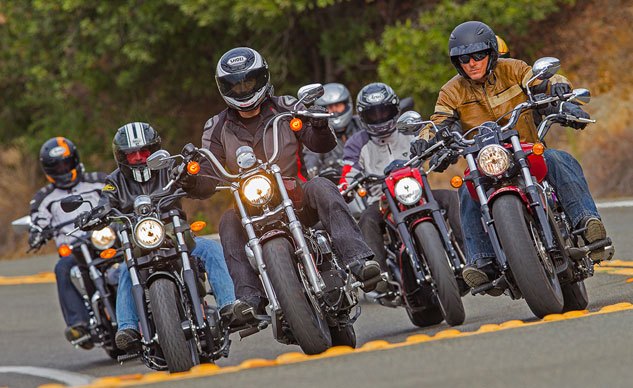
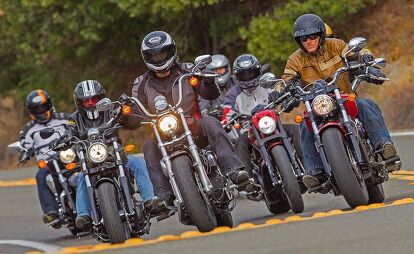



























































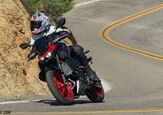
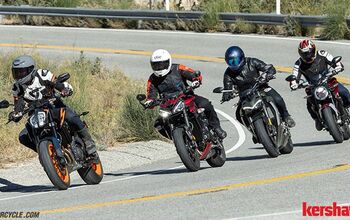
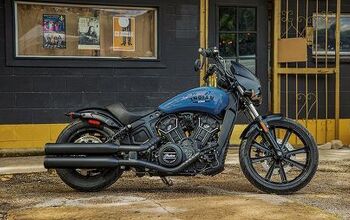
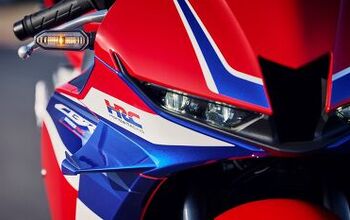

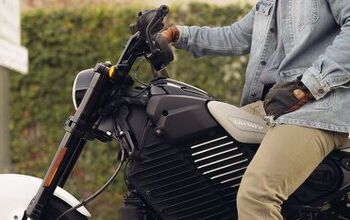
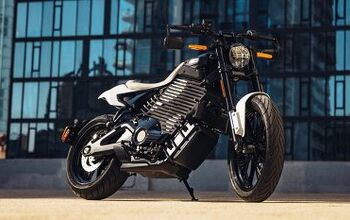
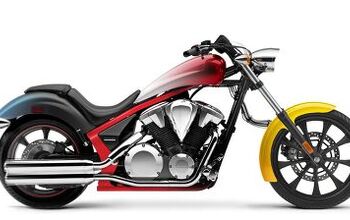
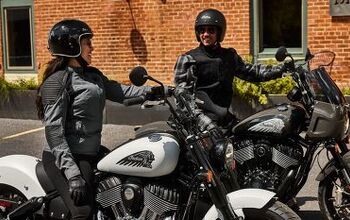
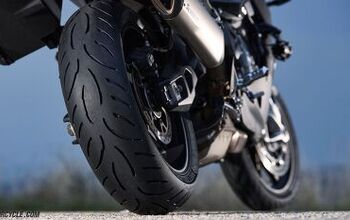
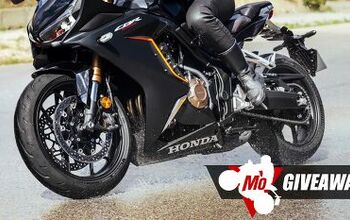
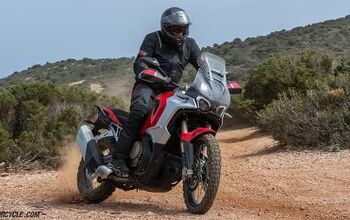
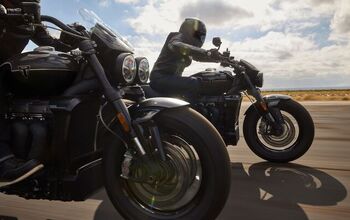

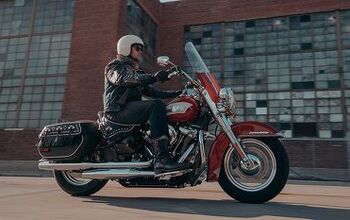
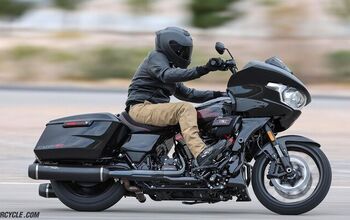

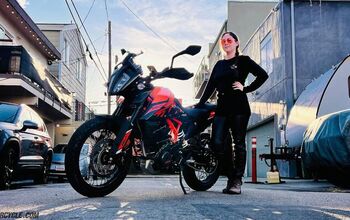
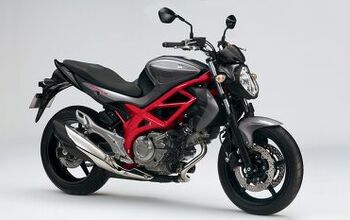
Comments
Join the conversation
Ha ha ha, after seeing the MO gang riding cruisers in formation, and after that round table discussion behind Cook's, I can't get the Black Widows out of my head. I'm not going to call him "Commander Duke" or "His Dukeness" any more. I'm going to call him "Cholla".
http://youtu.be/JfAoRNSoliA
Instead of the Gunner, the Victory Judge would make more sense. You should have also considered the Star Bolt. Lastly, adding the sportster to this crowd is an insult to all the other bikes. Still, good review!